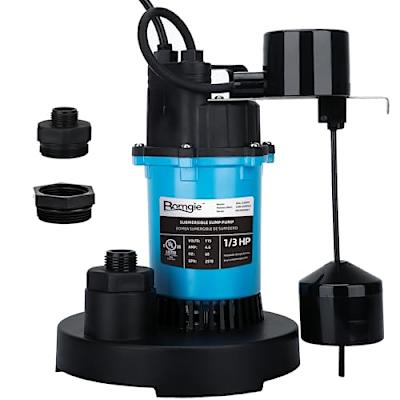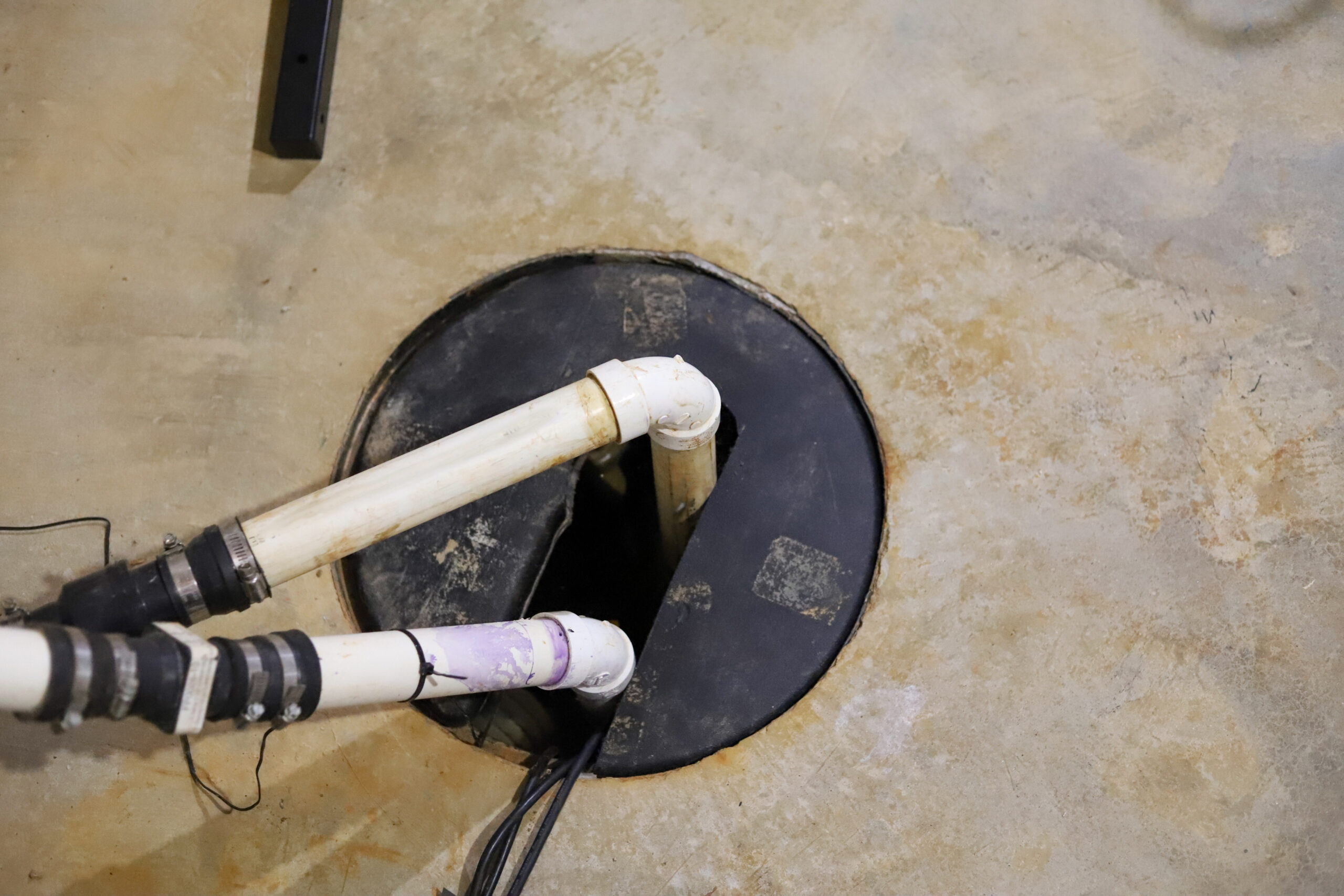Step-by-Step Instructions for Taking Care of a Sump Pump
Step-by-Step Instructions for Taking Care of a Sump Pump
Blog Article
What are your thoughts and feelings on Steps to Cleaning Your Sump Pump Properly?

Sump pumps are crucial elements in several homes, specifically in locations vulnerable to flooding or extreme moisture. They assist stop water damages by efficiently removing excess water from basements or crawl spaces. Nevertheless, like any other device, sump pumps need normal upkeep to ensure they work successfully when required one of the most. Cleaning your sump pump is an essential part of its maintenance, and understanding just how to do it properly can conserve you from expensive repair services and prospective calamities.
Introduction
Maintaining a tidy sump pump is essential for its proper functioning and longevity. Overlooking this important task can result in blockages, breakdowns, and inevitably, water damage to your residential property. Therefore, learning just how to cleanse a sump pump is important for home owners that rely upon these devices to maintain their cellars dry and safeguarded.
Recognizing the Sump Pump
Prior to diving right into the cleansing procedure, it's essential to have a fundamental understanding of exactly how a sump pump functions. Usually mounted in a pit or basin below the cellar flooring, a sump pump includes a number of vital components, including a pump, a float button, and a discharge pipeline. When water collects in the pit, the float button activates the pump, which then pumps the water out with the discharge pipeline, far from the building's foundation.
Indications of a Dirty Sump Pump
Recognizing when your sump pump needs cleansing is essential for stopping prospective breakdowns. Some common signs that show a filthy sump pump consist of strange sounds during procedure, lowered water flow, and visible particles in the pit. If you notice any of these signs and symptoms, it's necessary to clean your sump pump quickly to avoid any additional concerns.
Preparing for Cleaning
Before you start cleaning your sump pump, it's essential to take some safety and security preventative measures. Start by turning off the power to the pump to avoid any type of electric accidents. Furthermore, put on proper protective equipment, such as gloves and goggles, to protect on your own from dirt, particles, and prospective pathogens.
Step-by-step Guide to Cleaning a Sump Pump
Turning off the Power
Begin by detaching the power supply to the sump pump to prevent any accidents while cleansing.
Removing Debris and Dust
Utilize a bucket or a scoop to remove any type of visible debris, dust, or sediment from the sump pit. Dispose of the debris properly to prevent it from clogging the pump or the discharge pipe.
Cleaning the Pump and Drift Switch
Once the pit is free from particles, carefully remove the pump from the pit. Inspect the pump and the float button for any signs of damage or wear. Make use of a soft brush or towel to clean up the surfaces and remove any gathered crud.
Flushing the System
After cleansing the pump and float button, flush the sump pit with tidy water to remove any kind of continuing to be dust or debris. This will certainly assist ensure that the pump runs smoothly and effectively.
Checking for Correct Performance
Prior to reinstalling the pump, execute a quick examination to make certain that the float button activates the pump correctly. Pour some water right into the sump pit and observe the pump's procedure. If everything is operating properly, you can rebuild the pump and reconnect the power supply.
Upkeep Tips to Maintain Your Sump Pump Clean
In addition to periodic cleansing, there are several upkeep pointers you can comply with to keep your sump pump in optimal problem:
Verdict
Cleaning your sump pump is a crucial facet of its upkeep and makes sure that it operates successfully when you require it one of the most. By adhering to the actions described in this guide and including normal maintenance into your regimen, you can prolong the life expectancy of your sump pump and safeguard your home from water damages.
6 STEPS ON HOW TO CLEAN A SUMP PUMP PROPERLY
UNDERSTANDING SUMP PUMPS
Your sump pump plays a crucial role in protecting your home by managing and removing excess water. It primarily functions as a “shield”, guarding your basement against the damaging effects of water accumulation. The pump is housed in a sump pit in the lowest part of your basement, and its job is to pump out any water that collects there.
During heavy rainfalls or when snow melts rapidly, water can infiltrate your basement, posing potential risks like flooding, structural damage, and harmful mold growth. Here, the sump pump springs into action, pumping out the intruding water and directing it away from your home.
SAFETY FIRST
Before cleaning, remember to prioritize safety. Disconnect the sump pump from the power source to prevent any accidental electric shocks. Also, wear sturdy gloves to protect your hands from any sharp or dirty components within the pump.
REMOVE THE SUMP PUMP
After ensuring your safety, the next step is to remove the sump pump from its pit. Doing this might require careful maneuvering as you don’t want to damage any pump components. Once removed, clean the sump pit to remove any accumulated debris or sludge.
INSPECT THE PUMP
Inspect the pump for any visible signs of wear or damage. Check the power cord, float switch, and impeller housing. If any components look worn out or damaged, consider replacing them to ensure optimal performance.
CLEAN THE PUMP
Thoroughly clean the pump with warm, soapy water. Make sure to rid it of any dirt, gravel, or other debris that might impede its performance. You can use a toothbrush to clean the small, hard-to-reach parts of the pump.
REINSTALL THE SUMP PUMP
Reinstall the pump into the sump pit Make sure it’s positioned correctly to remove the water effectively Once it’s back in place, reconnect it to the power source TEST THE PUMP
Finally, pour some water into the pit to ensure the pump works correctly. It should start automatically and begin pumping out the water; if it doesn’t, check the power source and the positioning of the pump.
Remember, while cleaning your sump pump is an essential part of home maintenance, hiring a professional plumber for a thorough inspection and cleaning at least once a year is also important. This will ensure that your pump is in optimal condition, ready to protect your home from potential water damage.
BEST PRACTICES FOR CLEANING SUMP PUMP DISCHARGE PIPES
Regular Inspection: Regularly inspect your discharge pipes, especially during heavy rainfall or snowmelt periods. Look for any signs of blockage or damage. Early detection of problems can prevent serious issues down the line. Periodic Cleaning: Over time, sediment and debris can accumulate in the discharge pipes, impeding the flow of water. Regular cleaning helps keep the pipes clear and functioning efficiently. You can use a high-pressure water jet to effectively clean the pipes. Insulation During Winter: In colder climates, discharge pipes can freeze, blocking the outflow of water. Protect your discharge pipes from freezing temperatures by insulating them with foam pipe insulation. This will ensure the sump pump can continue to discharge water even in freezing conditions. Proper Positioning: The discharge pipe should be positioned to direct water away from your home’s foundation. Improper positioning can lead to water seeping back into the basement. Ensure the pipe is long enough and angled correctly. Installation of a Check Valve: A check valve prevents water from flowing back into your sump pit after the pump has pushed it out. Installing a check valve helps maintain the efficiency of your sump pump and reduces the risk of flooding. Minimize Pipe Turns: Every curve or turn in the discharge pipe can decrease the efficiency of water flow. By minimizing turns and bends in your discharge pipe, you can increase the efficiency of your sump pump. https://www.fullspeedplumbing.com/how-to-clean-a-sump-pump-properly9999/

We hope you enjoyed our topic about Cleaning & Maintenance Tips for Your Home's Sump Pump. Thanks so much for taking a few minutes to read our content. Enjoyed our piece of writing? Please share it. Let somebody else find it. I truly appreciate your readership.
Quote Report this page